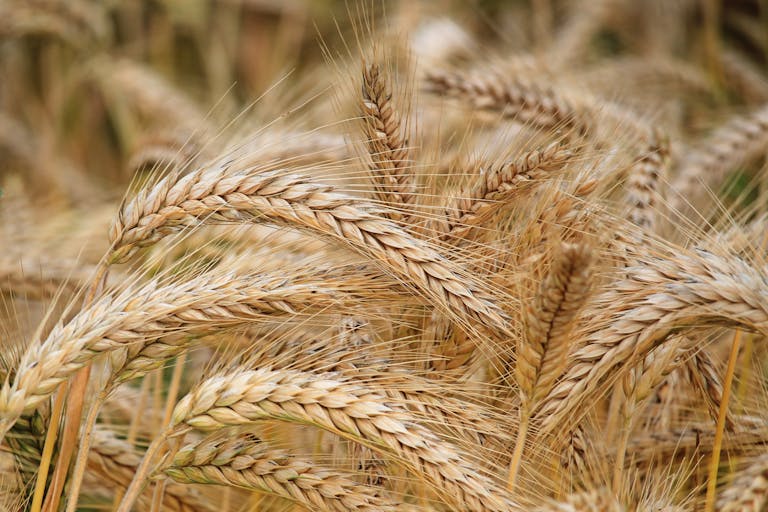Hidden Plant Stem Cells Could Transform the Future of Food and Farming

Plant scientists have taken a big step forward in uncovering the hidden regulators of plant stem cells, and their discovery could reshape how we think about food production, renewable fuels, and resilient crops.
Researchers at Cold Spring Harbor Laboratory (CSHL) have managed, for the first time, to build a detailed map of stem cell regulators in both maize (corn) and Arabidopsis thaliana, a small flowering plant widely used in plant biology. The findings don’t just add to our understanding of how plants grow—they could directly influence how we breed crops for yield and resilience in the future.
This research was published in Developmental Cell in August 2025, under the title “Large-scale single-cell profiling of stem cells identifies redundant regulators of shoot development and yield trait variation.” Let’s go through all the details of what was discovered, how the research was done, and why it matters.
Why Plant Stem Cells Matter
Stem cells are the foundation of plant growth. They sit at the tips of shoots and roots, constantly dividing to produce new tissues and organs. Everything from leaves to flowers to seeds ultimately originates from stem cells.
Because they are so fundamental, understanding how stem cells are regulated is key to figuring out how plants grow, how big they get, and how they adapt to stress. For farmers and plant breeders, that knowledge could mean the difference between ordinary harvests and more resilient, higher-yielding crops.
The challenge? Plant stem cells are extremely rare and difficult to study. Past research has often failed to capture them with enough detail to identify which genes are most important in controlling stem cell activity.
The Focus on CLAVATA3 and WUSCHEL
The CSHL team zeroed in on two well-known regulators: CLAVATA3 (CLV3) and WUSCHEL (WUS). These genes are classic markers of plant stem cells and play a central role in maintaining the balance of growth. Without them, stem cells either vanish or overgrow, leading to distorted plant structures.
The problem is that in previous experiments, cells expressing CLV3 and WUS were so rare that researchers couldn’t study them in depth. That’s where the new method came in.
A New Way to Capture Rare Stem Cells
Led by CSHL Professor David Jackson and former postdoctoral researcher Xiaosa Xu, the team carefully dissected tiny sections of maize and Arabidopsis shoots, some just 3 millimeters long. Using a microfluidics device, they separated thousands of cells one by one, converted their RNA into DNA, and tagged each cell’s identity.
This process—called single-cell RNA sequencing (scRNA-seq)—makes it possible to look at how genes are expressed across thousands of individual cells at once. It’s like building a high-resolution atlas of gene activity.
By applying this technique, they recovered around 5,000 CLV3-expressing cells and 1,000 WUS-expressing cells—an unprecedented achievement in plant biology.
Mapping the Stem Cell Atlas
The resulting atlas of gene expression allowed the team to not only track the behavior of CLV3 and WUS, but also identify hundreds of other genes that were active in these stem cells.
Crucially, they found genes that were preferentially expressed in both maize and Arabidopsis stem cells. That overlap suggests these regulators are evolutionarily conserved and may play important roles across many plant species.
Among the newly identified candidate regulators were:
- A family of ribosome-associated RNA-binding proteins
- Two families of sugar kinase genes, tied to hypoxia signaling and cytokinin hormone homeostasis
These discoveries are especially exciting because they connect stem cell activity not just to basic growth, but to hormone regulation, stress responses, and crop yield.
From Stem Cells to Crop Productivity
The researchers didn’t stop at cataloging genes. They went further by comparing their findings with genetic diversity data across different maize varieties. This allowed them to link certain stem cell regulators directly to grain yield components—traits that farmers and breeders care deeply about.
In other words, some of the genes identified in this study aren’t just important in theory. They are already shaping real-world differences in how productive one maize variety is compared to another.
Experimental Extras: Validations and Mutants
To strengthen their findings, the team used spatial transcriptomics to verify where specific genes were expressed within the plant tissue. They also studied maize stem cell overproliferation mutants, which helped confirm that several of the new candidate regulators really do influence shoot development.
This combination of single-cell sequencing, spatial mapping, and mutant analysis gave the study both breadth and depth, making it a robust foundation for future research.
Why This Study Matters
This research provides something plant scientists have long needed: a comprehensive gene expression atlas of rare stem cells in maize and Arabidopsis.
For the broader plant science community, this is valuable because the dataset will be made publicly available. That means researchers worldwide can use it without having to repeat the extremely difficult process of isolating and sequencing these rare stem cells.
For agriculture, the implications are just as significant. If breeders can identify which regulators influence yield or stress resistance, they can start selecting for them in crop breeding programs. In the long run, this could lead to new varieties of maize and other crops that are:
- More productive
- Better able to handle climate stress
- Optimized for food, livestock feed, or renewable fuels
A Foundation for the Future
David Jackson and his colleagues see this as foundational knowledge that could guide research for the next decade. Developmental biologists, physiologists, and breeders alike can draw on this dataset to tackle everything from the molecular details of shoot development to the practical challenges of crop improvement.
It’s a rare example of cutting-edge molecular biology that has clear, direct pathways to real-world impact.
More About Maize
Since maize was a central focus of this study, it’s worth noting why this crop is so important.
- Global Role: Maize is one of the world’s most widely grown crops, used not only for food but also as livestock feed and as a source of biofuel.
- Genetic Diversity: Maize has enormous genetic diversity, which makes it an excellent subject for studies connecting genes to traits.
- Economic Importance: In many countries, maize is a backbone of agricultural economies, making research into yield and resilience especially valuable.
More About Arabidopsis
Arabidopsis may not be a food crop, but it has been a model organism for plant biology for decades.
- Genetics: It has a small, fully sequenced genome, making it easy for scientists to study.
- Research Use: Discoveries made in Arabidopsis often apply to other plants, including major crops.
- Complement to Maize: By studying both Arabidopsis and maize together, researchers can tell which findings are species-specific and which are broadly conserved across plants.
Technical Notes for the Curious
- Single-cell RNA sequencing (scRNA-seq): This technique involves capturing the transcriptome (all active RNA) of individual cells. It gives scientists a cell-by-cell view of what genes are turned on.
- Spatial transcriptomics: While scRNA-seq tells you what genes are active, it doesn’t tell you where the cells are in the tissue. Spatial transcriptomics fixes that by mapping gene expression directly to physical locations.
- Microfluidics: This is a technology that allows researchers to manipulate extremely small amounts of liquid, which is how they were able to isolate and tag thousands of individual plant cells.
Funding and Collaboration
The project drew support from multiple sources, including:
- National Science Foundation
- University of California, Davis
- National Institute of Food and Agriculture
- Hearst Foundations
- Robertson Research Fund
This mix of funding shows how research like this, which bridges basic science and agriculture, is recognized as vital for the future of farming and food security.
Final Thoughts
This study is a breakthrough not because it answers all the questions about plant stem cells, but because it opens the door to answering them. With this new atlas of gene expression, scientists around the world now have a starting point for exploring how stem cells control plant growth, yield, and resilience.
In the coming years, we can expect this foundational work to ripple outward, influencing everything from basic plant biology research to the crops that end up on our tables.





